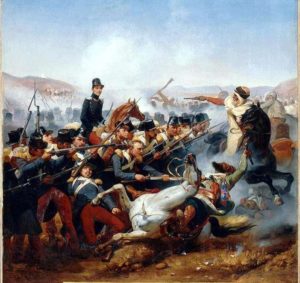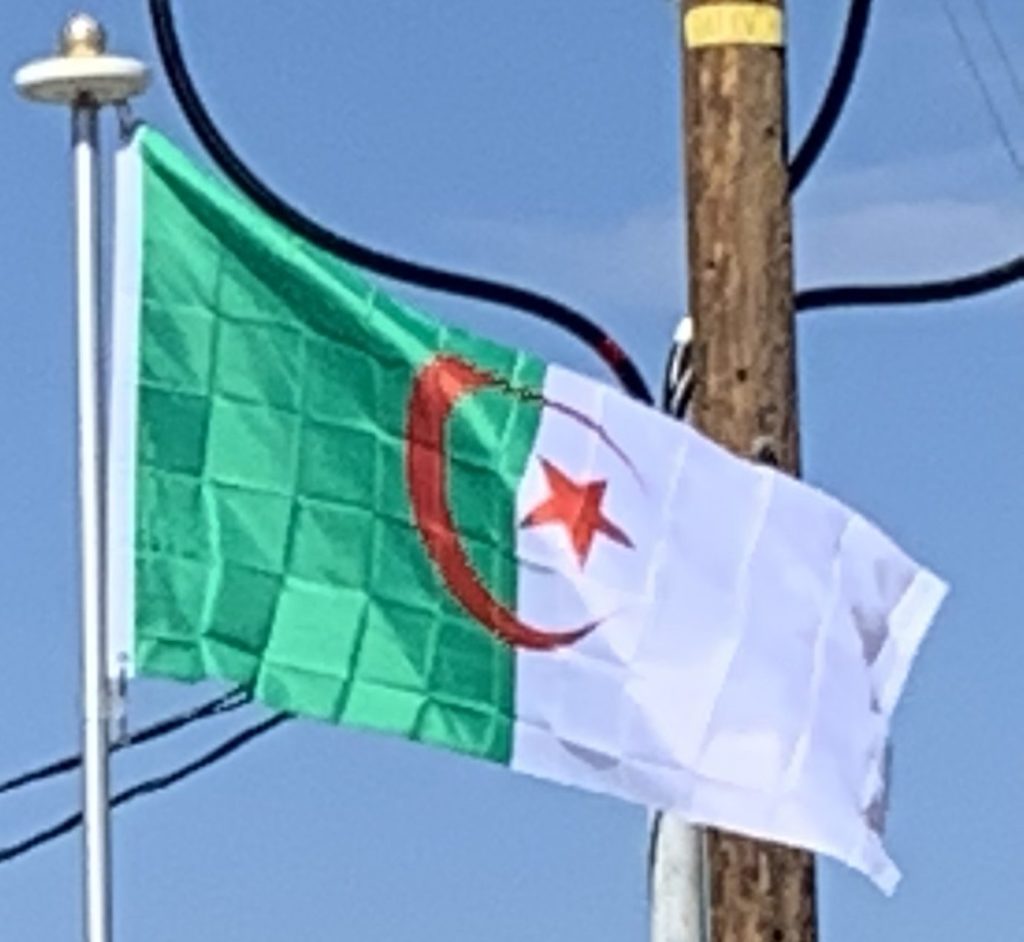Despite being removed from Algeria in the 19th century, Spain retained a presence in Morocco. Algeria consistently opposed Spanish fortresses and control in nearby Morocco through the 20th century.
French Colonization (1830–1962):
Under the pretext of a slight to their consul, the French invaded and captured Algiers in 1830. Algerian slave trade and piracy ceased when the French conquered Algiers. The conquest of Algeria by the French took some time and resulted in considerable bloodshed. A combination of violence and disease epidemics caused the indigenous Algerian population to decline by nearly one-third from 1830 to 1872. Historian Ben Kiernan wrote on the French conquest of Algeria: “By 1875, the French conquest was complete. The war had killed approximately 825,000 indigenous Algerians since 1830.” French losses from 1831–51 were 3,336 killed in action and 92,329 dead in the hospital. The population of Algeria, which stood at about 2.9 million in 1872, reached nearly 11 million in 1960. French policy was predicated on “civilising” the country. During this period, a small but influential French-speaking indigenous elite was formed, made up of Berbers, mostly Kabyles. As a consequence, French government favored the Kabyles. About 80% of Indigenous schools were constructed for Kabyles.

From 1848 until independence, France administered the whole Mediterranean region of Algeria as an integral part and département of the nation. One of France’s longest-held overseas territories, Algeria became a destination for hundreds of thousands of European immigrants, who became known as colons and later, as Pied-Noirs. Between 1825 and 1847, 50,000 French people emigrated to Algeria. These settlers benefited from the French government’s confiscation of communal land from tribal peoples, and the application of modern agricultural techniques that increased the amount of arable land. Many Europeans settled in Oran and Algiers, and by the early 20th century they formed a majority of the population in both cities.
During the late 19th and early 20th century; the European share was almost a fifth of the population. The French government aimed at making Algeria an assimilated part of France, and this included substantial educational investments especially after 1900. The indigenous cultural and religious resistance heavily opposed this tendency, but in contrast to the other colonised countries’ path in central Asia and Caucasus, Algeria kept its individual skills and a relatively human-capital intensive agriculture.
Gradually, dissatisfaction among the Muslim population, which lacked political and economic status in the colonial system, gave rise to demands for greater political autonomy and eventually independence from France. In May 1945, the uprising against the occupying French forces was suppressed through what is now known as the Sétif and Guelma massacre. Tensions between the two population groups came to a head in 1954, when the first violent events of what was later called the Algerian War began. Historians have estimated that between 30,000 and 150,000 Harkis and their dependents were killed by the Front de Libération Nationale (FLN) or by lynch mobs in Algeria. The FLN used hit and run attacks in Algeria and France as part of its war, and the French conducted severe reprisals.
